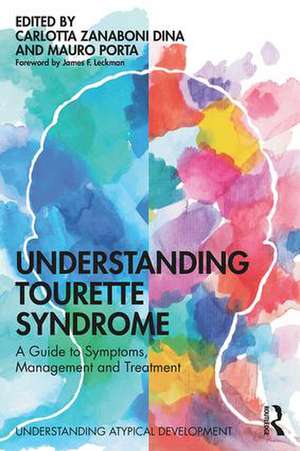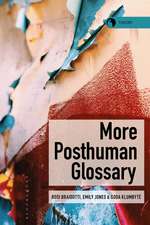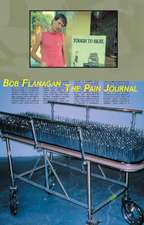Understanding Tourette Syndrome: A guide to symptoms, management and treatment: Understanding Atypical Development
Autor Carlotta Zanaboni Dina, Mauro Portaen Limba Engleză Paperback – 25 iun 2019
| Toate formatele și edițiile | Preț | Express |
|---|---|---|
| Paperback (1) | 271.14 lei 6-8 săpt. | |
| Taylor & Francis – 25 iun 2019 | 271.14 lei 6-8 săpt. | |
| Hardback (1) | 888.99 lei 6-8 săpt. | |
| Taylor & Francis – 25 iun 2019 | 888.99 lei 6-8 săpt. |
Din seria Understanding Atypical Development
-
 Preț: 220.89 lei
Preț: 220.89 lei -
 Preț: 227.97 lei
Preț: 227.97 lei -
 Preț: 220.98 lei
Preț: 220.98 lei -
 Preț: 199.04 lei
Preț: 199.04 lei - 5%
 Preț: 181.44 lei
Preț: 181.44 lei -
 Preț: 291.18 lei
Preț: 291.18 lei -
 Preț: 278.13 lei
Preț: 278.13 lei -
 Preț: 275.08 lei
Preț: 275.08 lei
Preț: 271.14 lei
Nou
51.88€ • 54.31$ • 42.93£
Carte tipărită la comandă
Livrare economică 05-19 aprilie
Specificații
ISBN-10: 1138595608
Pagini: 224
Ilustrații: 36 Tables, black and white; 34 Line drawings, black and white; 2 Halftones, black and white; 19 Illustrations, black and white
Dimensiuni: 138 x 216 x 15 mm
Greutate: 0.29 kg
Ediția:1
Editura: Taylor & Francis
Colecția Routledge
Seria Understanding Atypical Development
Locul publicării:Oxford, United Kingdom
Public țintă
Parents and Professional Practice & DevelopmentCuprins
1: A Short History of Tourette Syndrome
2: A Medical Overview of Tourette Syndrome
3: Diagnosing Tourette Syndrome
4: Therapy for Tourette Syndrome
5: The Role of Family
6: The Role of School
7: Friendships and Leisure Time
8: Tourette Syndrome and the Law
9: A Case Study of a Tourette Syndrome Sufferer: Giuseppe
Notă biografică
Mauro Porta, neurologist, is former Teaching Professor of the University of Milan, founder of AIST, and Director of the Extrapyramidal Diseases and Tourette Syndrome Centre at Galeazzi Clinical and Research Hospital, Milan, Italy. He worked at the Northwestern University of Chicago, USA, and got a Master Degree in Functional Neurosurgery. Named also as "Charcot’s son", Mauro spent several years working at the Salpêtrière Hospital of Paris, birthplace of Tourette syndrome.
Descriere
Understanding Tourette Syndrome sets out concise, evidence-based guidelines on this developmental disorder by combining an exploration of signs, diagnosis and treatment with a broader psychosocial approach. Zanaboni and Mauro outline the various symptoms of the disease, including tics, echolalia, palilalia, coprolalia and copropraxia, with the aim of demonstrating to all those involved in the life of a TS child ways to manage a range of situations from diagnosis to day-to-day life.
Therapies and social intervention, including habit reversal therapy and deep brain stimulation, are described at length, allowing caregivers to evaluate the best course of treatment. The fully up-to-date manual focuses on improving quality of life by offering practical ways of managing the condition at school and in the family, with additional emphasis on sibling relationships and childhood friendship. Understanding Tourette Syndrome also analyses the legal aspects relating to the condition to highlight how the neurological nature of Tourette syndrome needs to be considered in evaluating causality of committing crimes. The authors' straightforward language and expert subject knowledge makes the topic accessible for any reader, and case studies demonstrate how to apply scientific understanding of the condition to a real-life situation.
This unique guide is essential reading for parents and practitioners in clinical and educational psychology, counselling, mental health, nursing, child welfare, public healthcare, and those in education. It will also be of interest to postgraduates studying courses in Neurology, Psychiatry and Psychology.




























